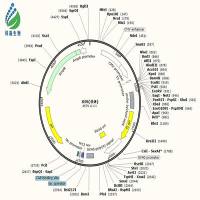Proteases Produced by Halophilic Bacteria and Archaea
互联网
560
Proteases from halophilic microorganisms present the advantage of being stable at high salinities, constituting interesting enzymes from a biotechnological point of view. To maintain osmolarity in saline environments the microorganisms adopt mainly two strategies, one followed by most moderately halophilic bacteria, accumulating organic compatible solutes in the cytoplasm, and the second followed by the halobacteria (extremely halophilic aerobic archaea), accumulating inorganic salts in the cytoplasm. In this chapter, we describe the methods for the production of proteases by a representative organism from each of the two main groups inhabiting the saline habitats: the moderately halophilic bacterium Pseudoalteromonas sp. CP76 and the archaeon Natrialba magadii. The production process involves (1) the culture of the microorganisms under optimal conditions for the production of the extracellular proteases, and (2) the recovery and purification of the enzymes from the culture supernatant.









